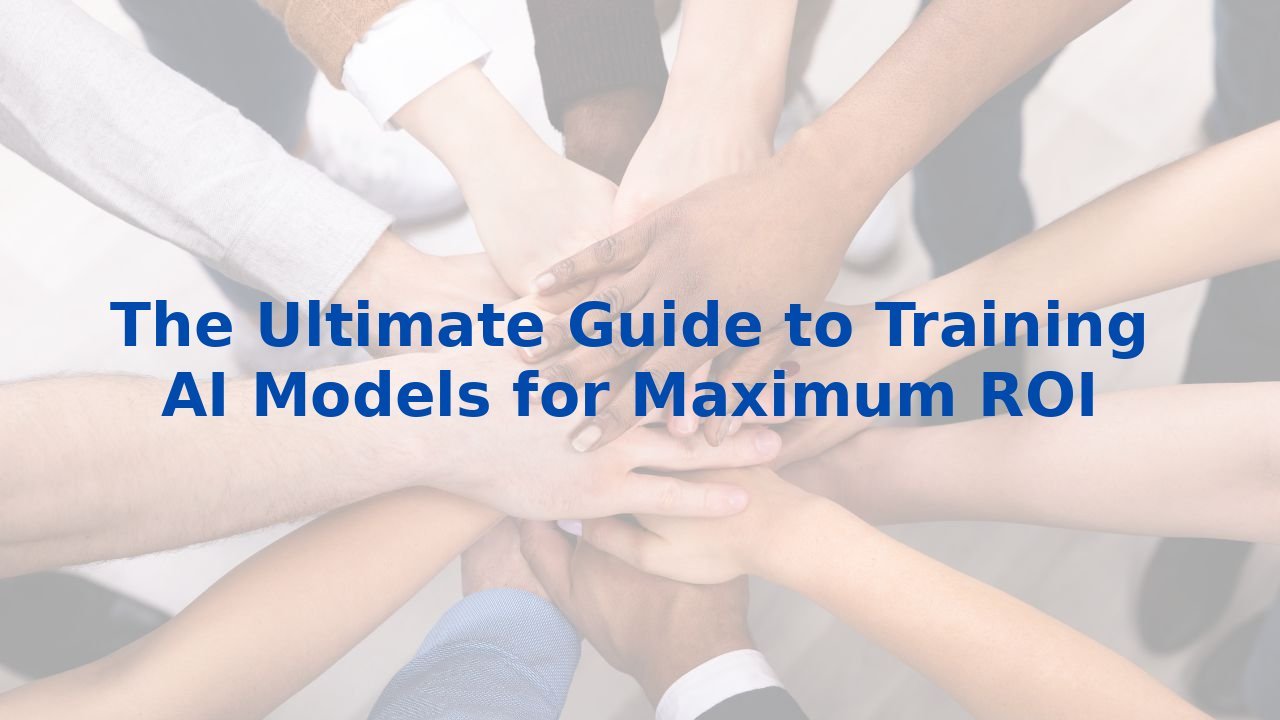The Ultimate Guide to Training AI Models for Maximum ROI
The Ultimate Guide to Training AI Models for Maximum ROI
Introduction
In the evolving landscape of technology, the significance of Artificial Intelligence (AI) has skyrocketed. However, AI models are only as powerful as the training they undergo. Understanding how to effectively train AI models is paramount for organizations aiming to maximize their return on investment (ROI). This guide outlines the critical elements of AI training, emphasizing the role of quality data, correlation analysis, and continuous refinement—all of which enhance operational efficiency.
The Importance of Data in AI Training
At the heart of AI training lies data; it is the raw material from which insights are sculpted. High-quality, diverse datasets are essential for creating models that can generalize effectively to novel situations. The process begins with data collection, where it's vital to ensure that the information represents variations in real-world applications. Without a solid foundation, AI models risk becoming biased or ineffective.
The Role of Correlation Analysis
Once data is collected, correlation analysis plays a pivotal role in the training process. It involves examining relationships between various variables to identify which factors significantly influence outcomes. By focusing on the most pertinent features, businesses can refine their models and maximize their predictive power. Recognizing the variables that correlate with desired results allows data scientists to narrow down their focus, eliminating noise while honing in on what truly matters.
The Impact of Proper Training on Model Performance
Proper training is not just beneficial; it is essential. Research indicates that organizations that invest in thorough AI model training are 50% more likely to see substantial ROI from their AI initiatives. Moreover, well-trained models have been shown to reduce error rates by as much as 25% and bias by up to 40%. This accuracy leads to better, fairer decision-making—key attributes businesses seek in their AI systems.
The Benefits of Robust Training
The advantages of a robust training framework are clear. Here’s how it enhances organizational performance:
- Improved Accuracy: Models that are trained rigorously make reliable and precise predictions, leading to better decision-making.
- Reduced Bias: A focused training approach minimizes biases within models, contributing to equitable outcomes.
- Enhanced Efficiency: Well-prepared models can process information swiftly, leading to enhanced productivity across the board.
- Increased Trust: Robust training instills confidence among stakeholders, ensuring that AI systems are seen as trustworthy allies in business.
The Importance of Continuous Monitoring and Refining
AI training is an ongoing journey. Following initial training, continual monitoring and refinement are necessary to maintain the effectiveness of models. The landscape in which businesses operate is constantly shifting, and so too should their AI systems reflect those changes. By regularly analyzing performance and tuning models, organizations can adapt and thrive amidst uncertainty, ensuring that their AI applications deliver sustained value.
Training Employees for AI
While the technology behind AI is impressive, the people who wield it are equally essential. Therefore, investing in employee training regarding AI can magnify its potential within organizations. Here are the benefits of empowering employees through AI training:
- Understanding AI Systems: Employees gain insights into AI workings, which enhances data quality and analysis processes.
- Identifying Bias: Educated teams are better equipped to detect and mitigate bias in AI models, leading to fairer outcomes.
- Improving Model Performance: By facilitating a deeper understanding of model training, employees can actively participate in enhancing performance through strategic data selection and feature engineering.
- Enhancing Trust: Well-trained personnel can effectively articulate AI-generated decisions, fostering trust among users and stakeholders alike.
Conclusion
In summary, the meticulous training of AI models is crucial for developing systems that are not only robust but also efficient and reliable. By emphasizing quality data collection, leveraging correlation analysis, and committing to continuous refinement, organizations can ensure their AI initiatives yield maximum ROI. Furthermore, educating the workforce on AI can significantly boost the effectiveness of these systems, ultimately leading to sustainable success. For organizations willing to invest in both technology and their people, the rewards are manifold.



